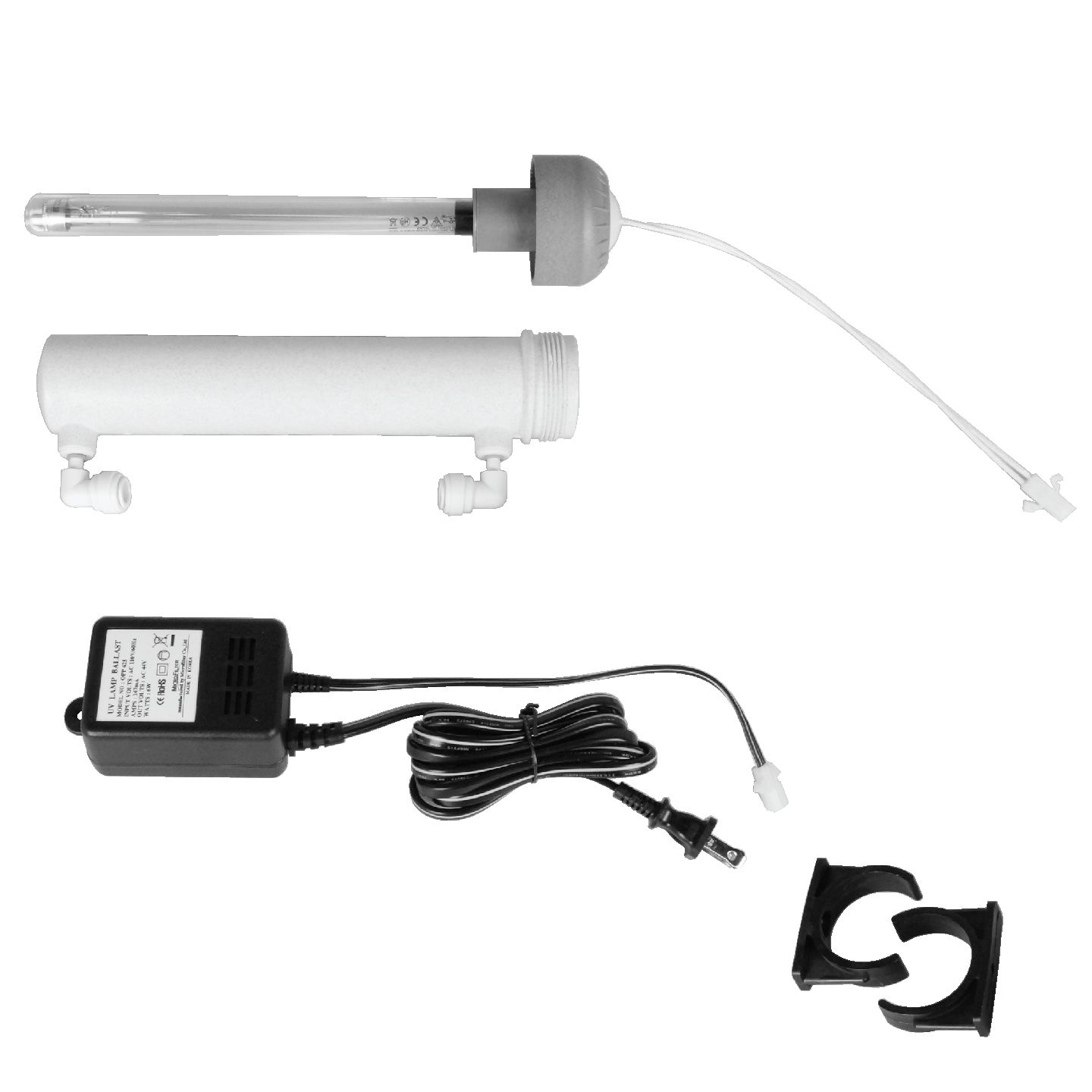PRR said:
My trouble with UV is there is no Standard Product. Buy one, maybe change the lamp once, and then the product is discontinued, you can't get parts, you gotta replace the whole thing. Not a dollar disaster but an annoying re-plumbing for a different size unit. That's actually why we switched to bottles.
I have an anecdote that almost resembles that... life with UV fluorescent lamps is not great... After X years the bulb in my UV water unit went out, so I purchased a replacement bulb... but no love, the new bulb did not light, then I replaced the ballast power lump and still no love. Finally I bit the bullet and bought a new replacement unit to get my system back to 100%.
After a while I decided to dig deeper into my failure to ignite the replacement UV tube and discovered a starter cobbled into the wiring. This starter was apparently what went bad, not the tube or ballast. I couldn't source the exact replacement starter, but took apart a generic fluorescent starter, wired it to the lamp and presto now it lights, but being no longer needed I took it apart and repurposed the UV light to kill stuff elsewhere around the casa.
Had I been a little more patient I could have given this old one to austex... but the generic starter was hanging off the end, would be a hodge podge. I think the vendor started providing starters with replacement bulbs but I bought a generic tube elsewhere.
AusTex64, your water is worse than mine. I could easily drink the surface water that runs off Jimmy's land, through peat, and into my front swamp. Sure it has some porcupine poop and tannins, but people have drunk worse for thousands of years. Dysentery is a city-disease, not out here with more water than neighbors.
yup with wells you need to worry about the neighbors poop...
You guys check me on something. Don't RO or softeners "waste" more water than they deliver?
I do not have the numbers at hand but that was another thing that failed on my RO system and needed repair... There is a flow restrictor that limits the volume of the discharge waste water. Before I figured out that mine was broken I was pushing so much water I noticed it on my bill.
The discharge water (brine) is still usable for watering plants, flushing toilets, all kinds of stuff...
On an old tired well and no good use for greywater, I'm not keen on that.
You could discharge the brine back into your well... but for small volume use simple counter top filters probably work OK.
from RO site said:
How much water waste is produced?
Simple answer: About 4 gallons wasted per 1 gallon purified (4:1) if you are on a municipal water supply with good pressure, or about 1:1 if you have the permeate pump.*
Detailed answer: The amount of water waste and clean water produced are intertwined. So before you can understand what is coming out of the system, you'll have to understand what is going into the system. All production and waste water figures are calculated at 77°F, 70psi and 250ppm NaCl input challenge load.
Below 40psi the system will not work and will only produce waste water. So if you are have a private well, check your pump and consider the length and the rise, from the well pump, to the location of the RO system when setting performance expectations and making the decision to add an electric booster pump.
Permeate Pump
A non-electric, water-saving device which dramatically improves Reverse Osmosis system efficiency.
Permeate Pump is a non-electric pump which uses only the hydraulic movement of the brine water (water going down the drain like a water wheel) to pull additional purified water (i.e. “permeate”) into your storage tank. The increased pressure allows the RO membrane to operate as if within an atmospheric tank system without back pressure. Use of a Permeate Pump lengthens membrane life, increases system performance, and provides other important benefits as detailed below. The permeate pump is A GREENER ALTERNATIVE TO "ZERO-WASTE" RO SYSTEMS.
https://www.theperfectwater.com/waste-water.html
Years ago I added a permeate pump to my system before I figured out that my flow restrictor was not restricting flow.
My system is pretty tight... The technology for consumer RO has improved in the decades since I first started using it.
JR
PS: Note to self.... past due time to replace my filters.
 ) I've been calling some friends I haven't heard in years. Some of them from way back, when I worked for that water treatment company.
) I've been calling some friends I haven't heard in years. Some of them from way back, when I worked for that water treatment company.









![Electronics Soldering Iron Kit, [Upgraded] Soldering Iron 110V 90W LCD Digital Portable Soldering Kit 180-480℃(356-896℉), Welding Tool with ON/OFF Switch, Auto-sleep, Thermostatic Design](https://m.media-amazon.com/images/I/41gRDnlyfJS._SL500_.jpg)























